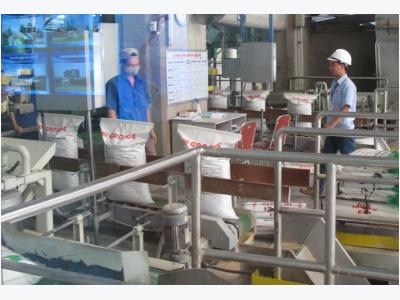Foreign animal feed frenzy verges on monopoly, local makers allege

Competition in Vietnam’s animal feed industry is falling out of balance, with foreign firms dominating more and more of the local market.
Le Ba Lich, chairman of the Vietnam Animal Feed Association, told VIR that local authorities “cannot force foreign animal feed makers, who are investing heavily in the country, to stabilise their product prices or call them ‘monopolists’, because they are not violating Vietnam’s law and they are operating under market law”.
Currently, 58 foreign firms operating over 70 plants occupy close to 65 per cent of the domestic animal feed market share.
At a recent shrimp development conference in the Mekong Delta province of Ca Mau, local firms told the government that animal feed prices in Vietnam are at top-tier international levels due to these foreign firms’ monopoly. They asked the government to establish limits on the market.
However, Lich said these firms are in fierce competition with one another, which prevents them from “entering co-operation to establish a monopoly over the market”.
Under the Competition Law, an enterprise is considered to hold the dominant position in a market if it has a market share of 30 per cent or more in a relevant market or is capable of considerably restricting competition.
A group of enterprises is considered to hold a dominant market position if they take concerted action to restrict competition, falling into one of the following categories: (a) two enterprises with total market share of 50 per cent or more on the relevant market; (b) three enterprises with total market share of 65 per cent or more on the relevant market; (c) four enterprises with total market share of 75 per cent or more on the relevant market.
The law also stipulates that an enterprise is considered to hold a monopoly if there is no enterprise competing in the goods or services dealt on the relevant market.
“No enterprise in Vietnam is either holding a dominant position or a monopoly over the local animal feed market,” Lich said. “For example, though Thai-backed C. P. Vietnam Livestock Corporation is Vietnam’s biggest foreign animal feed producer, it occupies only 15-17 per cent of the local market share.”
Last year, C.P. made three million tonnes of feed - a big portion of Vietnam’s total output of 21 million tonnes produced by over 200 firms.
“Foreign animal feed makers have to report their product prices on a monthly basis to the Ministry of Finance’s Price Management Department. Thus they can’t raise their prices without cause,” he added.
A source from the Ministry of Agriculture and Rural Development’s (MARD) Livestock Production Department told VIR that “It is impossible to say that foreign firms are monopolising or holding a dominant position in the local animal feed market, because no firm has a market share of 30 per cent or more, as laid down in the Competition Law.”
He added that since mid-2016, the rate of foreign firms asking permission from MARD for importing animal feed materials rose 10-15 per cent. “A great number of foreign animal feed firms are expected to enter Vietnam this year to undertake big projects, due to rising local livestock production,” he said.
A big Japanese group is planning to invest $100 million into making animal feed in the southern province of Dong Nai this year. And also this year, US-based agribusiness conglomerate Cargill Group will put into operation its 12th animal feed mill in Vietnam, a $30 million initiative in the southern province of Binh Duong. This mill will have a total annual capacity of 260,000 tonnes.
South Korea’s CJ Group will also invest millions of dollars into a new plant, its sixth, in the south-central province of Binh Dinh. This 120ha project will also comprise a pig-breeding farm.
And other major foreign producers are getting on the feeding frenzy. Chinese animal feed producer Tequhope plans to set up 12 animal feed plants in Vietnam through 2020. Currently, Tequhope operates a plant in the northern province of Bac Giang.
Production of animal feed is also growing fast, at about 21 per cent on-year over the past few years.
Related news
 VN rice exports set to face another tough year
VN rice exports set to face another tough year Despite facing difficulties, Viet Nam will strive to achieve rice exports of more than 5 million tonnes this year, the Viet Nam Food Association has said.
 Opportunities to invest in VN agriculture
Opportunities to invest in VN agriculture The Viet Nam Rubber Group (VRG) plans to equitise along with 20 of its subsidiaries in the third quarter of this year.
 Vietnam sets import quotas for eggs, cigarettes
Vietnam sets import quotas for eggs, cigarettes The import quotas follow the regulations on application of tariffs rate quota under the Eurasian Economic Union (EAEU) for its member countries.